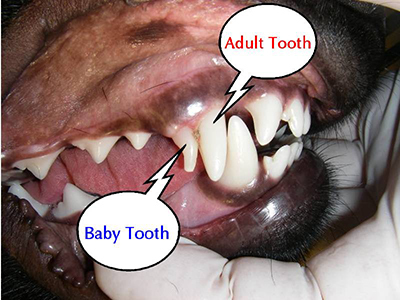Correct Bites

Dental health is important for your dog.The illustration shows the four basic bites that your dog could have. The healthy and correct bite is a scissor bite. Your dog should also have the right number of teeth to help him chew his food. Next time you are at your vet’s ask him to have a look at your dog’s bite, just to be sure. Your vet should do this as part of his annual exam.
You can actually brush your dog's teeth! There are doggie tooth brushes that are available at pet stores. Use doggie toothpaste, not human toothpaste. Twice a week is the suggested frequency for brushing. Alternatively, you can use a medical gauze pad with your finger. The tartar that builds on the incisors can often be removed with your finger nail. Ask your breeder or vet to show you. Tartar accumulation, just like on humans, can lead to periodontal problems and bad breath.
Another alternative to help keep teeth clean is letting your dog chew beef bones, large enough that they can not be swallowed. You can get raw bones from your butcher. Never feed small or cooked pork or chicken bones. They are prone to splintering that can be dangerous to your dog.
Below is what a correct scissors bite looks like from the front. Notice the midline of th supper and lower jaws are aligned. Normally the lower teeth should intersect the upper lateral incisors and upper canines.

Scissors Bite

Correct mesh of Incisors

Left is is a retained deciduous tooth. Normally the (baby) deciduous tooth's root is resorbed, making room for an adult tooth. Then the baby tooth falls out. Should this fail, the adult tooth may deviate from it's normal position, producing malocclusion. The resulting double set of teeth overcrowds the dental arch, causing food to become trapped between the teeth, leading to early periodontal disease. A double set of roots may also prevent normal development of the socket, and erode periodontal support around the adult tooth, resulting in early tooth loss. A retained deciduous tooth should be extracted as soon as an adult tooth is noted in the same area as the baby tooth. This usually happens naturally. If it does not, an extraction should be performed early so as not to effect the normally position of the adult tooth.
We have given our pups a raw riblet to chew on and this usually does the trick.

